
Freetown is the capital and largest city of Sierra Leone. It is a major port city on the Atlantic Ocean and is located in the Western Area of the country. Freetown is Sierra Leone's major urban, economic, financial, cultural, educational and political centre, as it is the seat of the Government of Sierra Leone. The population of Freetown was 1,347,559 as of the 2024 census.
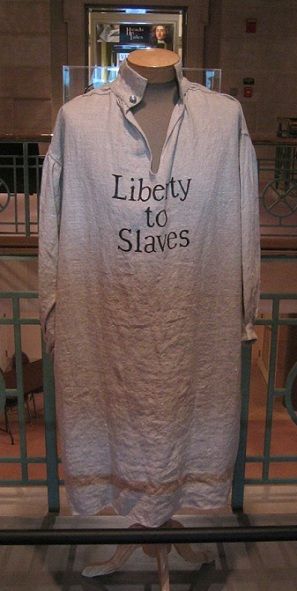
Black Loyalists were people of African descent who sided with Loyalists during the American Revolutionary War. In particular, the term referred to men enslaved by Patriots who served on the Loyalist side because of the Crown's guarantee of freedom.

The back-to-Africa movement was a political movement in the 19th and 20th centuries advocating for a return of the descendants of African American slaves to the African continent. The movement originated from a widespread belief among some European Americans in the 18th and 19th century United States that African Americans would want to return to the continent of Africa. In general, the political movement was an overwhelming failure; very few former slaves wanted to move to Africa. The small number of freed slaves who did settle in Africa—some under duress—initially faced brutal conditions, due to diseases to which they no longer had biological resistance. As the failure became known in the United States in the 1820s, it spawned and energized the radical abolitionist movement. In the 20th century, the Jamaican political activist and black nationalist Marcus Garvey, members of the Rastafari movement, and other African Americans supported the concept, but few actually left the United States.
Thomas Peters, born Thomas Potters, was a veteran of the Black Pioneers, fighting for the British in the American Revolutionary War. A Black Loyalist, he was resettled in Nova Scotia, where he became a politician and one of the "Founding Fathers" of the nation of Sierra Leone in West Africa. Peters was among a group of influential Black Canadians who pressed the Crown to fulfill its commitment for land grants in Nova Scotia. Later they recruited African-American settlers in Nova Scotia for the colonisation of Sierra Leone in the late eighteenth century.
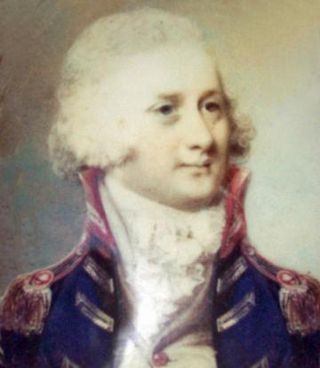
Lieutenant John Clarkson was a Royal Navy officer and abolitionist, the younger brother of Thomas Clarkson, one of the central figures in the abolition of slavery in England and the British Empire at the end of the 18th century. As agent for the Sierra Leone Company, Lieutenant Clarkson was instrumental in the founding of Freetown, today Sierra Leone's capital city, as a haven for chiefly formerly enslaved African-Americans first relocated to Nova Scotia by the British military authorities following the American Revolutionary War.
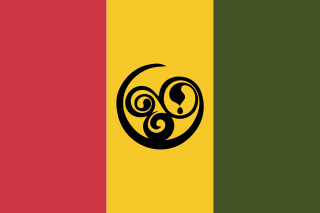
Black Nova Scotians are Black Canadians whose ancestors primarily date back to the Colonial United States as slaves or freemen, later arriving in Nova Scotia, Canada, during the 18th and early 19th centuries. As of the 2021 Census of Canada, 28,220 Black people live in Nova Scotia, most in Halifax. Since the 1950s, numerous Black Nova Scotians have migrated to Toronto for its larger range of opportunities. The first recorded free African person in Nova Scotia, Mathieu da Costa, a Mikmaq interpreter, was recorded among the founders of Port Royal in 1604. West Africans escaped slavery by coming to Nova Scotia in early British and French Colonies in the 17th and 18th centuries. Many came as enslaved people, primarily from the French West Indies to Nova Scotia during the founding of Louisbourg. The second major migration of people to Nova Scotia happened following the American Revolution, when the British evacuated thousands of slaves who had fled to their lines during the war. They were given freedom by the Crown if they joined British lines, and some 3,000 African Americans were resettled in Nova Scotia after the war, where they were known as Black Loyalists. There was also the forced migration of the Jamaican Maroons in 1796, although the British supported the desire of a third of the Loyalists and nearly all of the Maroons to establish Freetown in Sierra Leone four years later, where they formed the Sierra Leone Creole ethnic identity.

John Marrant was an American Methodist preacher and missionary and one of the first black preachers in North America. Born free in New York City, he moved as a child with his family to Charleston, South Carolina. His father died when he was young, and he and his mother also lived in Florida and Georgia. After escaping to the Cherokee, with whom he lived for two years, he allied with the British during the American Revolutionary War and resettled afterward in London. There he became involved with the Countess of Huntingdon's Connexion and ordained as a preacher.

David George was an African-American Baptist preacher and a Black Loyalist from the American South who escaped to British lines in Savannah, Georgia; later he accepted transport to Nova Scotia and land there. He eventually resettled in Freetown, Sierra Leone where he would eventually die. With other enslaved people, George founded the Silver Bluff Baptist Church in South Carolina in 1775, the first black congregation in the present-day United States. He was later affiliated with the First African Baptist Church of Savannah, Georgia. After migration, he founded Baptist congregations in Nova Scotia and Freetown, Sierra Leone. George wrote an account of his life, an important early slave narratives.
Boston King was a former American slave and Black Loyalist, who gained freedom from the British and settled in Nova Scotia after the American Revolutionary War. He later immigrated to Sierra Leone, where he helped found Freetown and became the first Methodist missionary to African indigenous people.

The Book of Negroes is a document created by Brigadier General Samuel Birch, under the direction of Sir Guy Carleton, that records names and descriptions of 3,000 Black Loyalists, enslaved Africans who escaped to the British lines during the American Revolution and were evacuated to points in Nova Scotia as free people of colour.
Settler Town is the oldest part of the city of Freetown, now the capital of Sierra Leone, and was the first home of the Nova Scotian Settlers.
The Snowball family was a prominent settler Creole family of Nova Scotian descent. The Snowballs were originally African-American slaves from "Princess Ann County, Virginia" and were formerly the property of Richard Murray. Nathaniel Snowball, who was the son of Violet Snowball and the brother of Mary Snowball, was only 12 years old when he was recorded in the Book of Negroes and described as a "fine boy. Formerly the property of Richard Murray of Princess Ann County, Virginia; left him 7 years ago". Nathaniel became a prominent settler and the patriarch of the Snowball family in Settler Town, Sierra Leone.
Moses "Daddy Moses" Wilkinson or "Old Moses" was an American Wesleyan Methodist preacher and Black Loyalist. His ministry combined Old Testament divination with African religious traditions such as conjuring and sorcery. He gained freedom from slavery in Virginia during the American Revolutionary War and was a Wesleyan Methodist preacher in New York and Nova Scotia. In 1791, he migrated to Sierra Leone, preaching alongside ministers Boston King and Henry Beverhout. There, he established the first Methodist church in Settler Town and survived a rebellion in 1800.
Cato Perkins was an enslaved African-American man from Charleston, South Carolina, who became a missionary to Sierra Leone.

Birchtown is a community and National Historic Site in the Canadian province of Nova Scotia, located near Shelburne in the Municipal District of Shelburne County. Founded in 1783, the village was the largest settlement of Black Loyalists and the largest free settlement of ethnic Africans in North America in the eighteenth century. The two other significant Black Loyalist communities established in Nova Scotia were Brindley town and Tracadie. Birchtown was named after British Brigadier General Samuel Birch, an official who helped lead the evacuation of Black Loyalists from New York.
Rawdon Street Methodist Church is a Methodist historical church in what was the historical Settler Town, Sierra Leone which is now known as Freetown, Sierra Leone. Rawdon Methodist was established by African American settlers in Sierra Leone who are known in Freetown as the 'Nova Scotian Settlers'. The first minister at the church was Joseph Brown; George Carrol (Carral) and Isom Gordon assisted him with running the church. Rawdon was supported built and supported by the Nova Scotians.
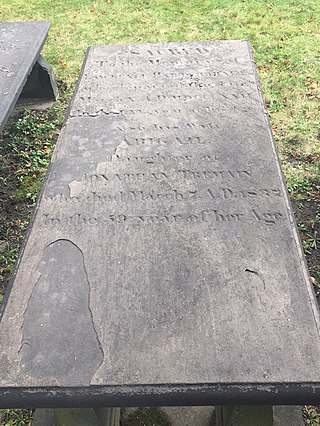
The Nova Scotian Settlers, or Sierra Leone Settlers, were African Americans and Black Canadians of African-American descent who founded the settlement of Freetown, Sierra Leone and the Colony of Sierra Leone, on March 11, 1792. The majority of these black American immigrants were among 3,000 African Americans, mostly former slaves, who had sought freedom and refuge with the British during the American Revolutionary War, leaving rebel masters. They became known as the Black Loyalists. The Nova Scotian Settlers were jointly led by African American Thomas Peters, a former soldier, and English abolitionist John Clarkson. For most of the 19th century, the Settlers resided in Settler Town and remained a distinct ethnic group within the Freetown territory, tending to marry among themselves and with Europeans in the colony.
William Gwinn was an African American from Boston, Massachusetts. He was one of the first African-Americans to participate in the antebellum American Back-to-Africa movement under the auspices of Captain Paul Cuffe's 1815 voyage to Sierra Leone.

The Sierra Leone Creole people are an ethnic group of Sierra Leone. The Sierra Leone Creole people are descendants of freed African-American, Afro-Caribbean, and Liberated African slaves who settled in the Western Area of Sierra Leone between 1787 and about 1885. The colony was established by the British, supported by abolitionists, under the Sierra Leone Company as a place for freedmen. The settlers called their new settlement Freetown. Today, the Sierra Leone Creoles are 1.2 percent of the population of Sierra Leone.
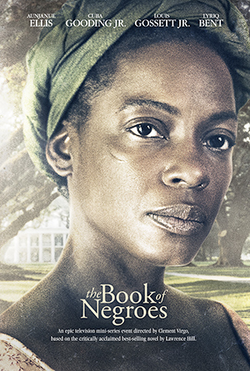
The Book of Negroes is a 2015 Canadian historical drama television miniseries directed by Clement Virgo, adapted by Virgo and Lawrence Hill from the latter’s 2007 novel of the same name. It stars Aunjanue Ellis-Taylor, Lyriq Bent, Cuba Gooding Jr., Louis Gossett Jr., Ben Chaplin, Allan Hawco, Greg Bryk, and Jane Alexander. It originally aired in six installments on CBC in Canada on January 7, 2015, and on BET in the United States on February 16.











